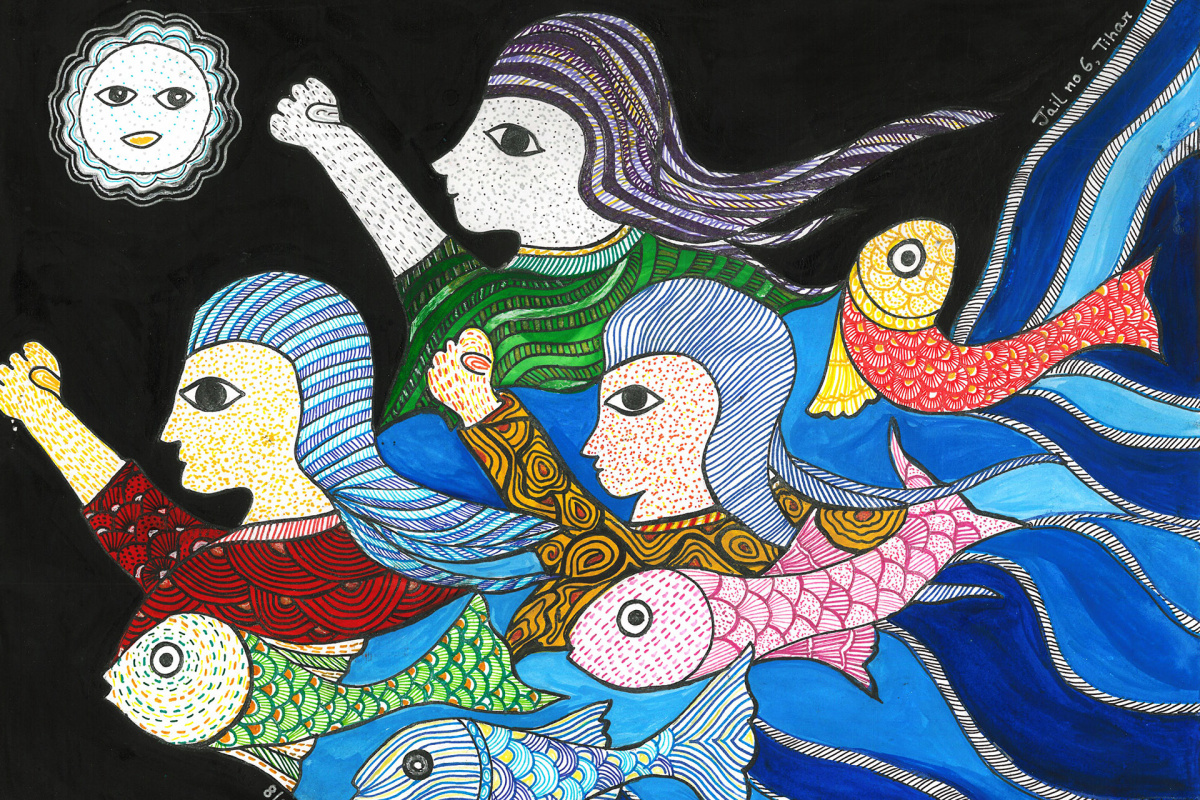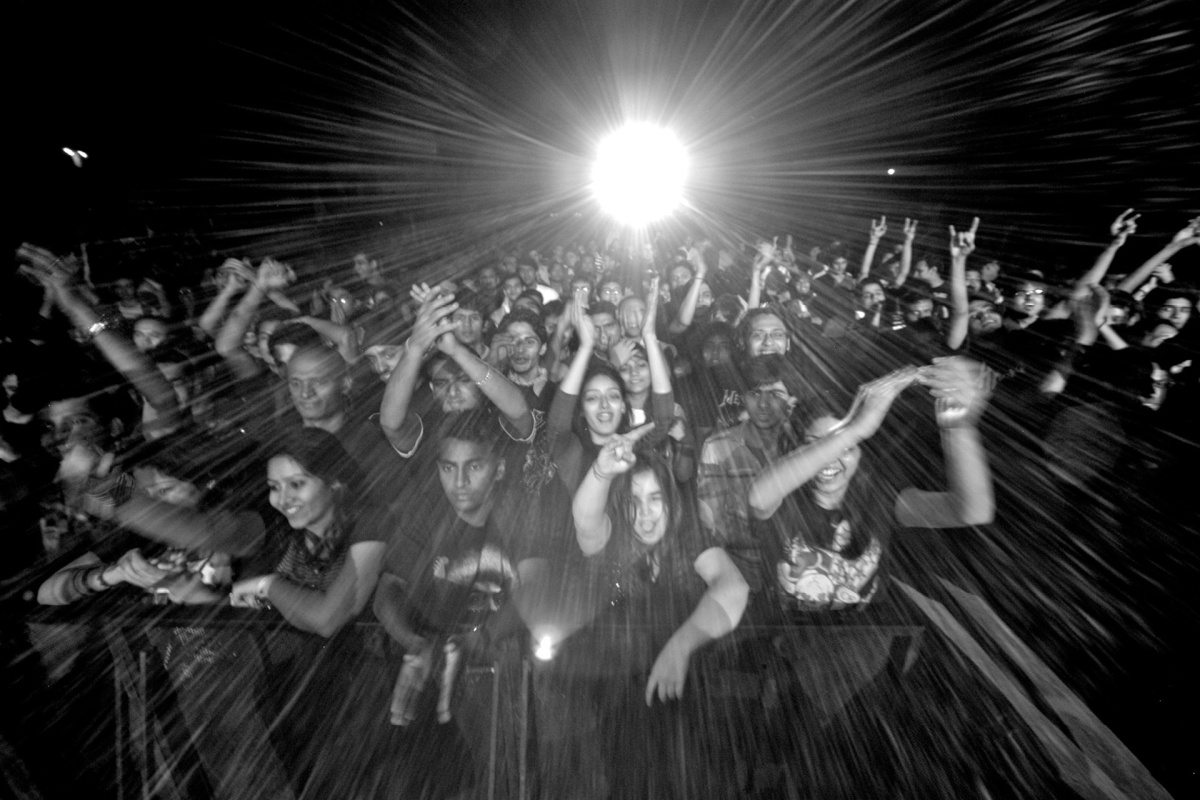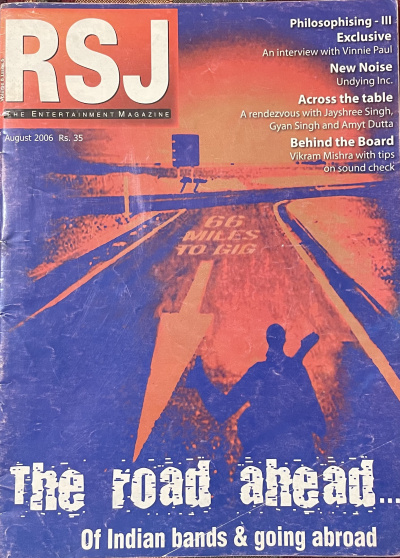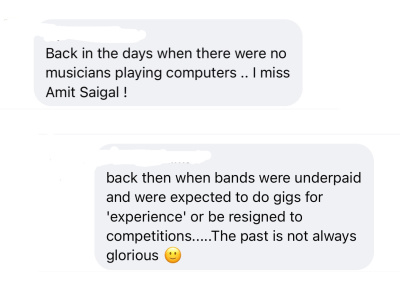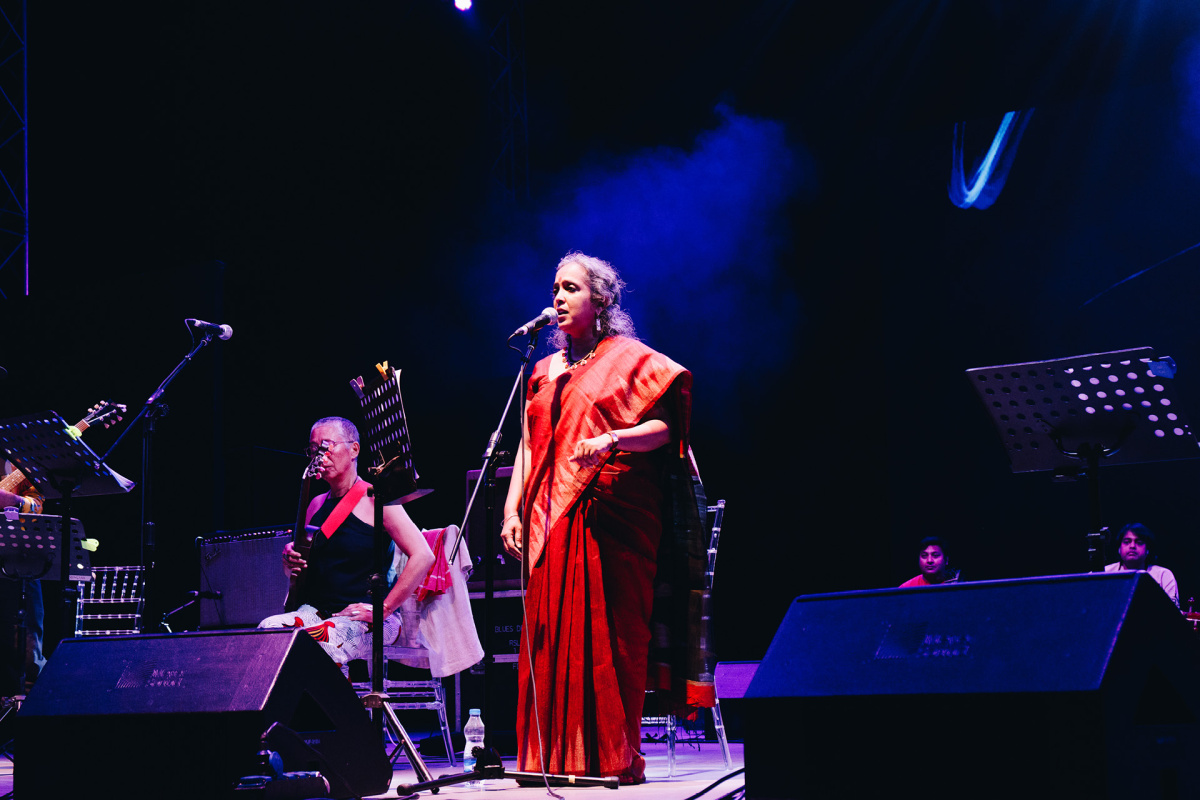
Tracing the Routes Through Which Music Moves
Sumangala Damodaran is renowned for her depth and volume of research on musical protest traditions and histories of indigenous, anti-colonial, and working-class music in India. In this interview with Norient City Sounds curator and editor, Suvani Suri, she unpacks the oral and aural imaginary that takes shape in Delhi owing to its political location, as well as her own experiences and artistic practice as a singer, writer, and researcher. She teases out strands from her recent research and publication with South African sociologist Ari Sitas that uncovers the deep histories and entanglements of music and migration in pre-colonial Afroasia.
[Suvani Suri]: I’m curious about your recently published book, «Maps of Sorrow». In your research on music and migratory movements in the Afro-Asian region that has shaped various musics, is there a thread where Delhi appears as a pitstop?
[Sumangala Damodaran]: Delhi has been the place where I’ve been for 41 years now, and it’s shaped me substantially. But at the same time, in my heart, I am still a migrant to Delhi. So I’m constantly negotiating these multiple identities, without necessarily thinking about it. For me, there are two ways in which I negotiate these multiple identities, which are – music, of course, and language.
I speak many languages. My immersion or an identification with a place, or even curiosity, about any place is reflected in these two aspects of a location that my ears are always attuned to. What does the music sound like, and what does the language sound like? Of course, music involves language.
[SS]: Could you elaborate on these associations a bit more, and how they might have formed for you?
[SD]: I was born in Vellore.1 My mother was studying in the medical college there, and then my first four years were in Bombay, after which my parents moved to Hyderabad. I grew up in Hyderabad – was there for ten years until I was 14. That was very formative for me. Then I moved to Trivandrum, Kerala, and you know I am Malayali.2 We are Malayalam speakers at home and so the identification with the move to Trivandrum was more natural in some sense. However, leaving Hyderabad was quite traumatic for me, because I had to move away from the place that I’d grown up in. Soon enough, I also left Trivandrum and came to Delhi when I was 15 – my grandfather was here. I then learned Bengali, and I can manage Tamil because it’s been part of my environment always, including in Delhi. Some of my closest friends were Tamil. At any point of time, my emotional world is inhabited by all of these movements, languages, and influences.
My relationship with Delhi has always been a complex one, but also a very strong one. It has been 41 years here, and now I’m actually thinking of leaving the city and coming here only for a few months in the year. So in that sense, this conversation is happening at a point where my own mind is trying to negotiate all of this.
[SS]: How did your move to Delhi guide your musical journey and artistic interests?
[SD]: Delhi is a site where my cultural influences were shaped quite substantially. This is where there was immense exposure to all kinds of musics which are associated with «Delhi», but at the same time are also from all kinds of places. Delhi is a site through which music moves. Let me give you some examples through a personal lens:
My earliest exposure to different forms of music was while I was still in school in Delhi. This is when I got introduced to the street theater group Jana Natya Manch (People’s Theatre Front; also called by the name Janam that is «birth») and Parcham. Parcham is a protest song group, the twin group of Jana Natya Manch. I joined them when I was quite young, perhaps 15 or 16. In that very formative stage, I was really thrown into intense activity, rooted in Delhi. We were singing in protest sites all over Delhi, and also traveling to the states of Haryana and Uttar Pradesh to perform. At times we traveled with the group to Calcutta, Rajasthan, and other states, but we mostly performed around what we now know as the NCR (National Capital Region). At that time Gurgaon3 was not so much a part of the Delhi imagination as it is now. All of this was completely new for me and led me to many musical forms which are part of the protest music imaginary, but also which also come from all kinds of folk traditions.
[SS]: Who were the important figures that you were learning from that time?
[SD]: I learned a lot from playwright and theater director Safdar Hashmi in those days and also Kajal Ghosh, who was the group leader of Parcham. Safdar used to write a lot of street theater songs which were based on the aalha and the sapri folk song forms from the regions of Madhya Pradesh and Uttar Pradesh in India. Until then, I only knew the relatively simpler versions of folk songs from Uttar Pradesh, Bihar, and Punjab. Because of cinema and Bollywood, I grew up listening to some of this and it was a part of the musical imagination, but to understand elements formally and then see how one can insert words into an aalha tune to make it into a political song, or a street theater performance, was revelatory.
A song in the «aalha» folk form from Bundelkhand region of India narrating the tale of two warrior brothers.
A Bhojpuri language song in the «sapri» folk tradition; title translates to «in the midst of this economic inflation, how do we sing a Sapri».
This was actually my earliest exposure to the musics of Delhi – of Delhi, because this music was being created and performed in Delhi in response to various incidents and political events in the city. We were performing a lot of music around that period, all the time – at trade union meetings, at factory gates, street corners, as parts of campaigns, and so on.
Honestly, I’ve learned from the best. I’ve been lucky to have been mentored by people like Safdar, Madan, and also poet and theater director Habib Tanvir in my early years – people who are absolute giants, and who had the patience to talk to a 15-year-old me and explain certain concepts and musical ideas carefully.
[SS]: So would you say that Delhi has had its own distinct sound or idiom of resistance music?
[SD]: Delhi has been a very important site for the unfolding of a certain kind of a radical imaginary through music, and it’s peculiar, because Delhi as a site of big crowds and gatherings is a much more recent phenomenon unlike Bengal, Kerala, Tamil Nadu, or Maharashtra. Delhi has not been a political city like these but at the same time, because it’s a capital city, it has been the site of many occurrences that people have reacted to – strongly, collectively, and artistically. It’s actually with the anti-corruption Anna Hazare movement in 2011 that really massive crowds started gathering. Before you would have a rally but you didn’t have a spontaneous kind of political mobilization happening.
Looking back, from the time that I’ve been here, since the 1980s, many political events and movements have unfolded here. Delhi has been a major site of communal tension and political turmoil. There was the anti-Sikh pogrom in 1984. While studying in Delhi University, I closely witnessed the women’s movement where various issues came up whether it was the Sati4 that happened in Rajasthan, or whether it was the Dowry Prohibition Act, campaigns to change rape laws, and so on. Different shades of the women’s movement have been extremely strong in Delhi and women’s organizations of all kinds have engaged with the city. I was a part of one of them and would go out for various campaigns with senior activists where street theater and music would mobilize people.
Over the years, to see a certain kind of a political imaginary being shaped through the arts in Delhi has been a significant part of what I experienced. This also made me think through all these multiple ways in which Delhi is important as a center. I really don’t like using the term melting pot, but one could call it that.
[SS]: The way you said it earlier really resonated: a city through which the music moves...
[SD]: Yes, and it is really transient because the real question is: who is an original resident of Delhi? Perhaps the people who live in the villages of Delhi who’ve been there for a very long time. Or perhaps the residents of old Delhi, who’ve been there for several generations, might consider themselves Delhites. But it is a supremely migrant city, and many pass through it also because of where it is physically located in the country and it being a capital city.
Not only does music move through this city, but also cultural traditions in general. These traditions not only moved through but also shaped the city and were in turn substantially shaped by Delhi. Among them are the musical traditions that come from Delhi 6 or Shahjahanabad5 and the city’s historical relationship with Sufism as an important center for its unfolding. Delhi is also the site of so many Hindu festivals around which cultural activities and performances are organized. Since I grew up in South India, I was largely exposed to South Indian languages. I did study Hindi but I started speaking it only once I moved to Delhi. Before that, music, for me, was also either Bollywood or the Carnatic tradition. It’s only after coming to Delhi that I started actually hearing Hindustani music and then subsequently also studied it. So Delhi really shaped how I look at music and culture in general.
[SS]: I am reminded of our conversation with Chaar Yaar, also a part of this series, where Madan Gopal Ji also mentions the significance of language in his practice and experimental journeys with music.
[SD]: Madan has been a very important mentor and musical influence for me since my early days in Delhi. You’re right, we negotiate those emotional trajectories very similarly, through language and through musical nuances. Our relationship with place is through sound and language. This is an important dimension of Delhi and has shaped me significantly.
[SS]: What was the impulse behind your movement from musical protest traditions towards the tracing of connections between music and migration?
[SD]: It’s only in the last ten years that I have thought more seriously about music, migration, and language looking at it in terms of the «longue duree» from the deep precolonial period and also across geographical territories and immense distances, much beyond India. With this stretching of time and distance, I started thinking about these musical traditions in a different way. But I must also say that it is primarily a sensory thing for me – it is about sense and sound.
Though I started working on migration and music in Afro-Asia, from the 7th to the 15th century, we were actually looking at contemporary traditions which we picked up by the ear. So the project actually started from a listening exercise. This is also where Madan (Chaar Yaar) comes in.
The first impetus for this project came from a heer6 that was written at the time of the Bengal famine in 1940 by Sheila Bhatia. She was in Lahore, but then she used the form of the heer to talk about the Bengal famine in Punjabi. This was sung by Swantantrata Prakash in 1943 from whom I picked it up when she was in her early eighties. It was much later, in 2008 or 2009, when I actually learned the song and reconstructed it with Madan’s help since Swantantrata ji could no longer sing by then. Madan looked at the lyrics and said: «Listen, this is a heer, and Sheila Batia wrote it. This is a classic 18th century jewel and this is how it should be sung». And that’s how I sang the heer.
The first time I performed it was a very emotional moment for me. I had invited Swantantrata for the performance, and she had not responded, but a lot of her friends had come wondering who I was, singing old songs that belonged to their youth and memories. As I announced on stage, one of them got up and said, she passed away a couple of days ago. Even now my hair stands on end when I think of that moment. I don’t know how I sang the song after that. But then I found her community – people from her community who had heard her sing this in the 1940s. That whole experience of singing the heer that Madan taught me stayed on with me. I listened very carefully to him and the nuances, because I don’t speak Punjabi. He taught me to listen to the nuances of singing in Punjabi, the inflections of language, the tonality, how it changes the way that you sing the bhairavi,7 and so on. This was the beginning in a way for me to also start listening carefully to the nuances of a song that would then stay with me.
Editor’s note: The heer that Sumangala speaks of here is «Kinu phol dassan dukh dard saiyon» (To Whom Can I Tell My Sad Story?). It was sung by her and recorded as part of the album Songs of Protest, released in 2011 with Underscore Records.
[SS]: How did this way of listening shape your research that went into Maps of Sorrow?
[SD]: So, this song really was the beginning for me and then, in those days, I was obsessed with listening to music like that. Once I started listening, it took me all across and everywhere. Eventually my search landed me musically in Southern Spain, where I found this musician called La Caita who is featured in the movie Latcho Drom by Tony Gatlif, singing something that sounded exactly like that particular heer to me. She was also a contemporary singer talking about being chased out and persecuted. It was a lament. Then a song in the soundtrack of Iranian director Abbas Kiarostami’s film Shirin had the same kind of a tune. I was hearing a lot of songs which sounded quite the same!
That period was obsessive for me. I was listening like a mad person. By 2010, I started having conversations about this with my collaborator, Ari Sitas, who is South African of Greek Cypriot descent and had migrated to South Africa. When we were listening, he said, «Listen, I’m very familiar with this». I started listening to Greek music, and then Turkish music. Then we started pointing out similar sounds to each other and that’s how a little musical map was forming from contemporary music.
[SS]: Where does the title, «Maps of Sorrow», come from? Were you mostly looking at lamentation traditions in music across temporal and geographical locations?
[SD]: The name came from the beginning of the project – the traditions of lament. We found that people were responding to difficult situations in life, in very similar ways musically. There are musical tropes that we started to spot – phrases that are formed musically or even tunes and lyrics. Suddenly a word would appear across geographies which one wouldn’t expect. We realized that it is not possible for us to make sense of this unless we started digging more.
The question that was developing in my mind was – is this a very similar emotional response to very similar kinds of circumstances, something like a universal response?
Or is it shaped by specific histories of migration? We wrote a paper which was published and that became the basis on which we submitted a project proposal to the Mellon Foundation which became a massive project that led to this book, Maps of Sorrow, which is available now. This book has come out of that which is telling a large story, theoretically as well as in terms of examples of songs, musical forms, musicians etc.
[SS]: In a project like this where you are making all these connections and trying to make sense of them like you said, what is the role that speculation or storytelling plays?
[SD]: As Ari is also a writer, a poet, and a storyteller, he suggested that we use a literary trope. Hence, we use a fictional character who starts his journey from Southern Africa and travels all across, and also comes to India. On the way he meets this fictional woman called Mariam and we are trying to figure out where she’s from, and so on. So that’s a large story where we tried to connect these musical traditions. A lot of it is conjectural, because how else do you actually do it?
[SS]: At what point does Delhi then begin to feature in this story?
[SD]: Delhi is an important site in this. I started looking at the history of music in Delhi very differently after doing this project. There is a lot of historical work on Delhi’s music. There is this fascinating book on music in Delhi, from the 13th to the 18th century written by Madhu Trivedi (2012). A lot of these stories are known and familiar. People know the story of the Islamic influence on the music of this region, and what came to be known as Hindustani music later from the 13th century onwards, beginning with the slave dynasty, and so on. We know that there has been the Turko-Persian influence on Hindustani music with the coming up of the Qawwali, and Amir Khusro. But somehow taking it much beyond this context opened up my mind a bit more. While Delhi is a site where this crisscrossing has happened for centuries and it’s been recorded at least from the 12th to the 13th centuries onwards, the fascinating part is that all of this is still quite alive in Delhi. It hasn’t been lost. The Qawwali tradition, Hindustani classical music tradition, is there and many of these traditions crisscross here.
These observations have led to the beginning of a new project about traditions that appear in Delhi, but are not just from Delhi. What I would love to do is to go into the musics of the itinerant communities that come to Delhi – the blacksmiths, the street hawkers who sharpen knives, the people who are at the edge of so many different urban settlements in Delhi. They put up their tents and belong to a broad set of people who are itinerant trades people. So what do they sing? What are those traditions ? I would love to explore that, I think, at some point.
[SS]: This also actually connects back to another thread that you spoke about in the response to Brahm Prakash’s book «Body on the Barricades» (2023): The idea that a song becomes a site of both intensive and extensive politics – the site where a deeply personal and particular affect is felt, but that also zooms out all the way into something like a larger universal and historical experience. What and how do you think of this entanglement between the personal experience and its presence in a larger archive of political kinds of turns and movements?
[SD]: You know, at one level it’s a transition that I made in my own trajectory as a singer. I learned how to sing as a child when I was sent off for singing classes, like in any typical South Indian household. Then I realized that when I sang, people listened. This was about a certain dexterity that one acquires with training. It was almost like a trick that I was playing since I knew that people liked it when I sang and I could sing all kinds of things. My brother and I used to endlessly listen to the radio station Vividh Bharti as kids, and we knew every possible interlude between the songs – it was all there in the head. Hence it was almost mechanical but fun and the understanding of affect was very different.
When I was in Parcham, because of the context of a political space and scene, it was powerful in a different way for me. Singing there was a response to events and intended to provoke. But even then, I would say, in my own trajectory, I was a more mechanical singer early on: I could just stand up and sing, and that did not feel too difficult, so I would enjoy it but was not so emotionally immersed in it. At least that’s how I saw myself even though the people who heard me didn’t seem to think so.
There was a specific incident that started to change how I felt and thought about music and its affect – the instance of the 1984 anti-Sikh riots8 when I was summoned by Safdar Hashmi to sing to a crowd that was seething with anger because of the violence that was meted out to their communities in Delhi. I witnessed the impact that the song was having on the crowd and I could see that it was also something that I was doing with my voice and also feeling myself. It is then that I started thinking about affect more consciously and when the personal stakes in it really deepened for me, whereas for a lot of people it could start as part of one’s training itself if you are emotionally immersed.
It was much later when I started getting exposed to people who taught me explicitly about thinking about music, such as performer and composer Shubha Mudgal. I learned music with her for a year and she used to say certain things in the class which just made me think and feel very deeply. What does a raag mean? What does a certain enunciation mean? She used to say: «You should open your mouth in a certain way to enunciate certain swaras,9 and for it is to sound a certain way». With all of these experiences, the thinking around what produces an affect evolved for me. Technique started to get converted into thought for me, at a much more deeper level.
[SS]: How did the album «Songs of Protest» come about?
[SD]: It was in the late 1990s when I actually started responding to my own craft in the form of a much more intrinsic kind of music. Later, in 2006, it all came together for me when I began working on the research and documentation of the histories and forgotten musical traditions of the Indian People’s Theatre Association (IPTA). With the IPTA project and all the conversations that I had with people then, the relationship of music to politics just exploded for me and it was just madness.10 I realized then how I’m negotiating the intrinsic connections between craft and politics through my being in a way. The album was released in 2011 and presents some of these songs of resistance composed in the 1940s and 1950s. These have been performed in four languages: Hindi, Bengali, Punjabi, and Malayalam.
[SS]: That’s incredibly fascinating. Thank you for sharing that. It makes me think of this idea of the song as an archive, like a living archive, and I wonder how to think of censorship then in the context of music, in relation to a song.
[SD]: Yeah, that’s the thing. A song can often provoke censorship because people don’t know how to sense it. So suddenly it’s a song which can then cause the need for censorship, like what happened with «Hum Dekhenge» (Katju 2020). It’s interesting how it becomes anti-national in Pakistan, and then it’s declared anti-national in India during the anti-CAA movement. I think that’s where music with its affective possibilities has that possibility of going beyond censorship. It’s like a trick that you can play. I’ve done it so many times in situations where people think that what they’re going to listen to will fulfill their fears about it being problematic. And then they are not able to do it, because you actually convey something that’s quite the opposite with the means of an experience that it evokes that defies an ideological presumption. Over the past 15 years, and then particularly from 2015, I’ve had lots of these experiences where there is an impulse to ban, and not allow me to sing because of the presumption that something objectionable is going to be sung. But as long as there is the tiniest bit of space where people are willing to listen, I’ve managed on many occasions to actually turn the tables around.
[SS]: Could you share one of the incidents when this sort of a reversal was produced?
[SD]: In 2016, during the JNU movement,11 I was going to many colleges in Delhi University to perform. One performance led to another, someone would hear it and invite me to perform at another space. There were occasions in which the college principals were refusing either because they themselves were subscribing to the anti-national rhetoric and in other cases they were just scared and wanted to avoid it. So in two colleges of Delhi University, I actually had this experience where the principal started off by allowing the performance but with the disclaimer that a stop would be put to it if anything controversial was sensed. In one instance in fact, I had the principal sitting in the audience and who was there just to make sure that I’m not doing anything that is objectionable, or actually waiting for me to do something objectionable over there, and at the end of it the complete opposite happened. At the end he organized a high tea in his room, invited people from various other colleges and said that this is something that you must organize, and that this is what the nation needs, what young people need, and so on. In another college there were a couple of hardcore RSS12 members sitting but they were willing to listen. At the end of it, I remember one of them, an old lady, came up to me, held my hand and wept her heart out. She said, «You know you’ve opened our eyes to our history in a different way».
So what I’m trying to say is that as long as that space is there, there is the scope of going beyond censorship in ways in which you can play those tricks very well, because the audience is there with you. Unless it’s a genocidal audience, unless it’s an audience which is there to kill you and not willing to listen. You know, it can happen. I think.
[SS]: Having gone through such a range of experiences and encounters of such varying intensities, how are you presently exploring your own relationship to singing and performance?
[SD]: I think we can go to two extremes in terms of thinking about affect. The one extreme is to say that it is all about training. If you’ve studied music in the following way for so many years and so on, then you know the right way to sing the raag. Yes, that contributes substantially, but then is that it?
At the other end, you can say that all that is not even necessary. Affect is something that you can’t express. What I’m trying to say is that when you practice or are practicing affect as a singer or performer, all of your experience and training comes into play. But simultaneously, it’s also doing things to you. The audience is also playing with you and affecting you significantly.
I actually did a year of bel canto13 opera training at the Russian Culture Center in Delhi. This also changed the game for me in terms of the relationship with my own body «as a musical room». The relationship between the body and breath, and the note is something that operatic technique drills into you. The bel canto style of opera is very tough and after a year I couldn’t continue – I got vertigo. It was intense, I also had a full time job and it was just too tiring for me. But I still carry that with me significantly. It made me experience this whole theory of the body as an auditorium, the body as a sound box with resonators which is there in Indian classical music as well, but you’re not quite taught it in that way. This actually made me think about affect differently again in the sense that it became a very deep personal process for me and it has continued to be like that.
However performative a situation I am in, however big the audience, I need to lapse into the personal depths. For instance at Shaheen Bagh, I don’t know exactly how big the audience would be that would gather there everyday, but it was massive and there was so much chaos. Even in a space and situation like that, even when I’m singing a song like «We Shall Overcome», I have to find the personal space within me. The process of singing continues to remain very deep for me, to the extent that it disturbs me and destabilizes me. I have to reach that point of the destabilization to be able to communicate with an audience.
- 1. Vellore is a city in the state of Tamil Nadu, in Southern India.
- 2. A Malayalam-speaking inhabitant of the Malabar Coast of India, where the state of Kerala is located.
- 3. A planned city and commercial district, Gurgaon is one of India’s largest information technology, financial, and banking hubs. It is a border city of Delhi and a part of the Haryana state, and was renamed to Gurugram in 2016. See PTI 2016.
- 4. «An even more worrying development took place between 1982 and 1983 in Delhi, Rajasthan, and parts of Bengal, where attempts were made to revive sati, the practice of immolating widows o n their husbands funeral pyres. Under the aegis of the Rani Sati Sarva Sangh (an organization to promote sati), feminist discourse was used to propagate a cult of widow immolation. Women’s demonstrations were organized in various parts of the country to demand ‘women's right to commit sati’. In Delhi, feminists decided to hold a counter demonstration along the route of a pro-sati procession. This was the first time that feminists were forced to confront a group of hostile women, which was in itself so shocking that it took the heart out of the counter-demonstration. Most distressing of all, however, was the way in which the processionists appropriated the language of rights, stating that they should have the right, as Hindus and as women, to commit, worship, and propagate sati» (Kumar 1995, 360).
- 5. Delhi 6 refers to the area of Old Delhi. The number 6 is from the Postal Index Number (PIN) of the district – a shortened form of 110006. Old Delhi was the walled city of Delhi, India, founded as Shahjahanabad in 1639, when Shah Jahan, the Mughal emperor at the time, decided to shift the Mughal capital from Agra.
- 6. A traditional ballad of Northwestern India, sung in Punjabi language.
- 7. A raga or melodic framework in both Carnatic and Hindustani Classical music traditions, but that operates differently in both.
- 8. «Days after the riots in 1984, following the assassination of former Prime Minister Indira Gandhi, when Delhi was still seething with anger, Parcham, a popular music group, went around the city with a rather brave message of peace. They reached Khalsa College where the atmosphere was at its hostile best. Safdar Hashmi, the playwright and founder of Jana Natya Manch, nudged Sumangala, a young girl in the group, to sing ‹Jaane wale sipahi se poochon›, a song by by Urdu poet Makhdoom Mohiuddin composed during the Second World War. ‹Would it be relevant?› Sumangala protested. Safdar had his way, and Sumangala was witness to what followed – a rare catharsis, the belligerent gathering was down on its knees, some weeping. ‹That song did what five speeches couldn’t have.› As Sumangala grew older, this experience stayed with her. In fact, even as she sang the same song at a seminar organised recently in Bangalore, she purged her audience» (Nathan 2015).
- 9. Musical tones in Sanskrit.
- 10. This research ended up in the book The Radical Impulse: Music in the Tradition of the Indian People’s Theatre Association (Damodaran 2017).
- 11. In 2016, protests broke out in Jawaharlal Nehru University (JNU) and many other colleges in Delhi and across the country after the death of Dalit scholar Rohith Vemula, a case of caste discrimination and abetted suicide by right-wing political groups and the university administration (Agence France-Presse 2016). The demand for justice was taken up by students around India. Not too long after, student activists of JNU were falsely charged with a case of sedition on grounds of raising «anti-India» slogans during a protest meeting. This was a protest gathering on the JNU campus in solidarity with the struggle of Kashmiri people for their democratic right to self-determination, and against the judicial killing of Afzal Guru and Maqbool Bhat. This entire sedition row diverted attention from the Rohith Vemula case (Pinto 2016) and inaugurated the vocabulary of the «anti-national» (The Wire 2021) to be henceforth used pejoratively by right-wing political parties and media outfits for anyone critical of the current regime and exercising their right to dissent.
- 12. Rashtriya Swayamsevak Sangh, is an Indian far-right, Hindu nationalist paramilitary organization, closely affiliated with the current ruling party of India Bharatiya Janata Party.
- 13. A vocal style of training that prevailed throughout most of Europe during the 18th and early 19th centuries.
List of References
This interview is part of the virtual exhibition «Norient City Sounds: Delhi», curated and edited by Suvani Suri.
Project Assistance: Geetanjali Kalta
Graphics/Visual Design: Upendra Vaddadi, Neelansh Mittra
Audio Production: Abhishek Mathur
Video Production: Ammar
Biography
Shop

Published on September 29, 2023
Last updated on April 02, 2024
Topics
About the micropolitical qualities of sound as a non-conscious experience of intensity.
From political music in the GDR, the trouble of punk musicians in China and the dangerous life of kurdish folk singers in Turkey.
A generative practice that promotes different knowledge. One that listens is never at a distance but always in the middle of the sound heard.
What happens, when artists move from one to another country? For example, when an Arab artist replaces the big tractors in her the village with big jeeps of the West.
Place remains important. Either for traditional minorities such as the Chinese Lisu or hyper-connected techno producers.
About Tunisian rappers risking their life to criticize politics and musicians affirming 21st century misery in order to push it into its dissolution.
From westernized hip hop in Bhutan to the instrumentalization of «lusofonia» by Portuguese cultural politics.
Special
Snap

